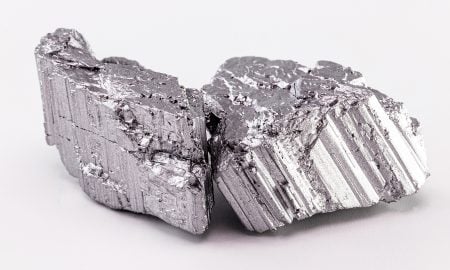
Wall Street Downgrade VS. Upgrade: Which One Is Better for Your Money?

“Bad news sells.” It is an age-old adage we have all heard before. In the world of finance, the principle often holds true. When Wall Street analysts decide to downgrade a stock, it tends to create a much bigger stir than when they issue an upgrade. And it is not just because we are naturally drawn to drama–it has everything to do with your money and how you can best navigate the volatile waters of the stock market.
Let’s dive in:
The Domino Effect of a Downgrade
One analyst’s downgrade can often lead others to reevaluate and follow suit. When a respected analyst or firm issues a downgrade, other firms may conduct their own reviews, leading to further downgrades.
This domino effect can exacerbate the drop in stock prices, making a single downgrade more impactful than an upgrade.

Tima / Pexels / Here’s how a Wall Street Stock downgrade is better for your money.
Downgrades Often Signal Fundamental Issues
Upgrades are typically the result of better-than-expected quarterly results or a new product launch. They are momentary blips on a company’s long timeline. On the other hand, Downgrades often signal deeper, fundamental issues with a company, whether it is an unsustainable business model, increased competition, or regulatory hurdles.
Such issues are not easily resolved overnight. Hence, a downgrade can have longer-lasting impacts.
The Psychological Impact of Negativity
Human beings, by our very nature, have a negative bias. That means we tend to place more weight on negative information than on positive. Think about it: If you are camping in the woods and hear rustling nearby, you are more likely to be alert and cautious. It is a survival mechanism.

Artem / Pexels / Just like in real life, negativity sells more in the financial world.
Similarly, when investors hear of a downgrade, they are quicker to react: Selling off shares, causing the stock price to tumble.
The “Buy the Rumor, Sell the News” Phenomenon
Often, by the time an upgrade is announced, the positive news has already been priced into the stock, a phenomenon known as “buy the rumor, sell the news.” In other words, the stock might have been rallying in anticipation of good news.
And the actual announcement of the upgrade does not bring as much of a price pop. Conversely, a downgrade can catch investors off guard, leading to a more dramatic sell-off.
Financial Instruments Add Fuel to the Fire
In today’s complex financial world, there are myriad instruments like options and short-selling that allow traders to bet against a stock.

Anna / Pexels / A Wall Street Stock downgrade can catch investors off guard, leading to a more dramatic sell-off.
A downgrade can trigger these bearish trades, thereby adding more downward pressure on the stock price.
Greater Long-Term Implications
While upgrades can boost investor morale and potentially spur short-term buying, downgrades can deter new investors for a longer period. When a company gets downgraded, it might also face higher borrowing costs, making it expensive for them to raise capital. This could impact their growth plans and further influence stock performance.
So, the dance of upgrades and downgrades is an integral part of Wall Street’s rhythm. As an investor, it is essential to understand the deeper implications behind these moves. While upgrades are certainly welcome news, it is the downgrades that often demand more of our attention.
Remember, in the world of investing, knowledge truly is power. And sometimes, the most valuable insights come not from the cheers of success but from the whispers of caution.
More in Buzz
-
`
Dwayne ‘The Rock’ Johnson’s Business Ventures
When you think of Dwayne ‘The Rock’ Johnson, the first thing that may come to mind is his impressive career in...
December 5, 2023 -
`
Sam Bankman-Fried’s Secret Celebrity Network Exposed
In the glitzy world of cryptocurrencies, where fortunes can be made and lost instantly, having connections to the stars can make...
November 29, 2023 -
`
Are Rare Earth Elements Really So Rare?
When we hear the term “rare earth elements,” our minds often conjure up images of elusive and scarce materials. After all,...
November 20, 2023 -
`
Exploring America’s Top Tier Hotels
For those who crave the finer things in life, the United States offers a treasure trove of luxurious hotels that elevate...
November 19, 2023 -
`
Where Does Elon Musk Live? Let’s Find Out!
Elon Musk, the billionaire entrepreneur and visionary behind Tesla and SpaceX, is known for pushing the boundaries of technology and innovation....
November 10, 2023 -
`
The Origin of Elon Musk’s Feud With Bill Gates
In the world of tech titans and billionaire visionaries, it’s not uncommon for rivalries and feuds to develop. One of the...
November 1, 2023 -
`
Guitar Smashed By Nirvana’s Kurt Cobain Sells for Nearly $600k!
In the world of rock ‘n’ roll, legends are born from the music and the artifacts left behind. One such artifact,...
October 21, 2023 -
`
Dwayne “The Rock” Johnson’s Plastic Surgery Journey
Dwayne Johnson, globally celebrated as “The Rock,” is synonymous with wrestling and Hollywood stardom. With a physique chiseled from relentless workouts...
October 10, 2023 -
`
The Most Expensive Things Owned By Brad Pitt
Brad Pitt, one of Hollywood’s most iconic and influential actors, has amassed fame and fortune and an impressive collection of extravagant...
October 3, 2023















You must be logged in to post a comment Login